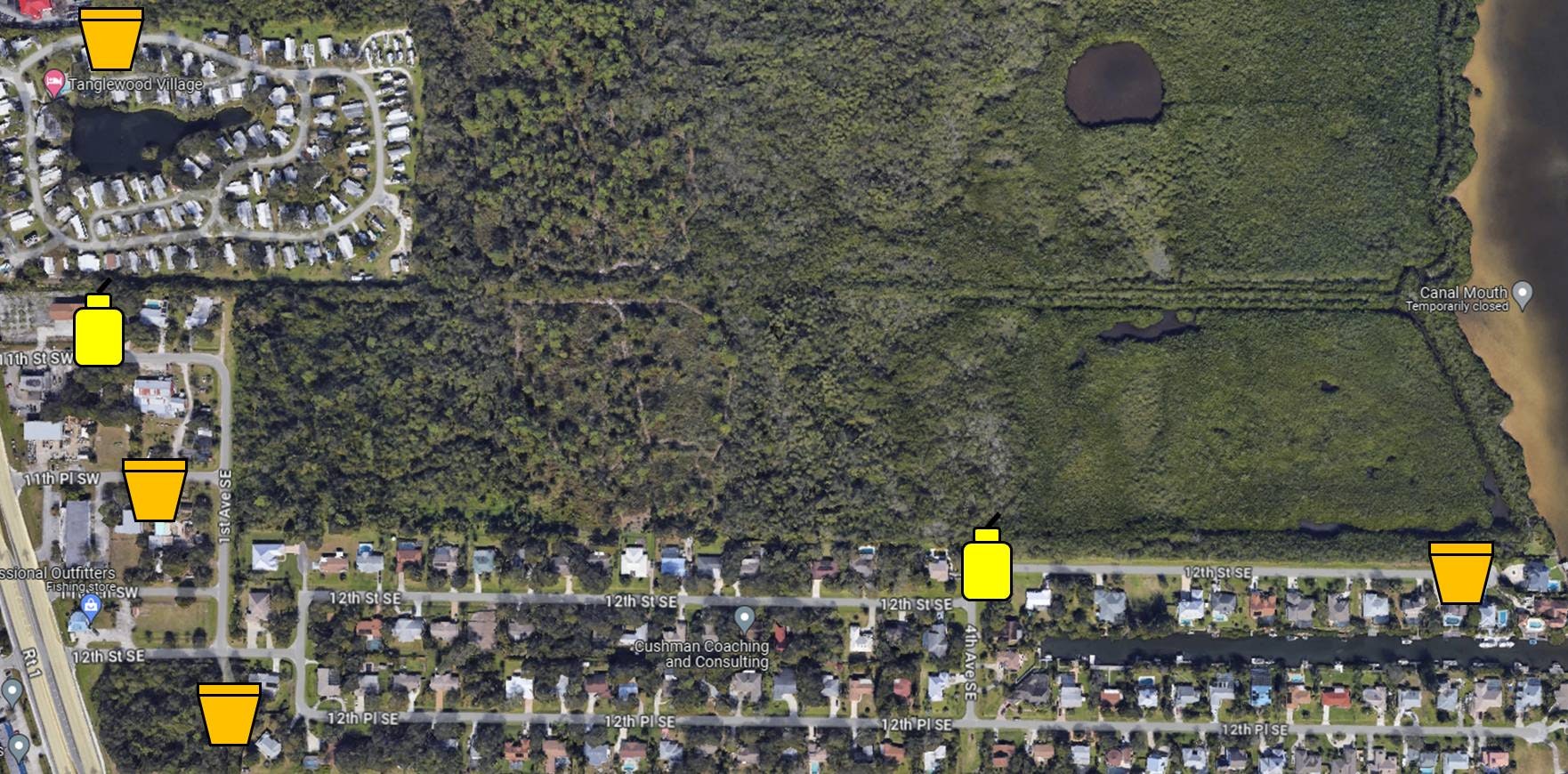Field Research
The District Science Department regularly conducts research, collaborating with various organizations such as the University of Florida’s Florida Medical Entomology Laboratory (FMEL) in Vero Beach, the U.S. Fish and Wildlife Service, Florida Department of Environmental Protection, Harbor Branch Oceanographic Institution, Florida A&M University, and other mosquito control entities. Research endeavors encompass a range of mosquito control-related topics, including salt marsh management (e.g., Rotational Impoundment Management), mosquito ecology, larvicide and adulticide effectiveness, and mosquito-transmitted disease surveillance. Much of our research findings are disseminated through peer-reviewed scientific journals.
To ensure the effectiveness of larvicide and adulticide compounds, IRMCD employs testing methods developed by reputable organizations such as the World Health Organization and the Centers for Disease Control, in addition to proprietary methods. These tests encompass laboratory, semi-field, and field environments.
Laboratory Testing

Periodic evaluation of pesticides is conducted to ensure their efficacy in current environmental conditions and their ability to control local mosquito populations effectively.
Mosquito resistance to insecticides is monitored through periodic testing of mosquito larvae and adults from the area.

Field Testing
Starting this year the Science department is launching a brand-new project focused on understanding the distribution of two medically important vector species, Aedes aegypti and Aedes albopictus. These two species are known vectors of Dengue, Zika, and chikungunya arboviruses. The knowledge gained from this project will be used to construct disease transmission risk maps that we can use to better protect the public from a disease outbreak. The project involves placing two collection traps, ovicups and BG traps (pictured below), around residences and businesses to obtain Aedes aegypti and albopictus eggs and adults. These traps are completely safe and harmless, so if you see them in your area, please do not disturb them.


Currently locations are actively being sampled in the Southeast part of the county. On the maps, the orange “cup” icon indicates an ovicup site and the yellow “BG trap” icon represents the BG trap site. The areas on the maps will be sampled. As collection locations change, new maps will be provided to keep the public up to date. So, check back regularly to see where the project moves next.
.jpg?ixlib=rb-1.1.0&w=2000&h=2000&fit=max&or=0&s=0216709335bf76469741747c2a7ede9e)

If you have any questions about the project or would like to volunteer your residence as a collection site, please contact Kyle Kosinski at the Indian River Mosquito Control District at (772) 562-2393 or k.kosinski@irmcd.org
Environmental tests
Environmental impact assessments include tests conducted in actual salt marshes to gauge the effects of treatments on non-target aquatic insects. New and existing products undergo testing in exposed mini environments to evaluate their environmental implications.






